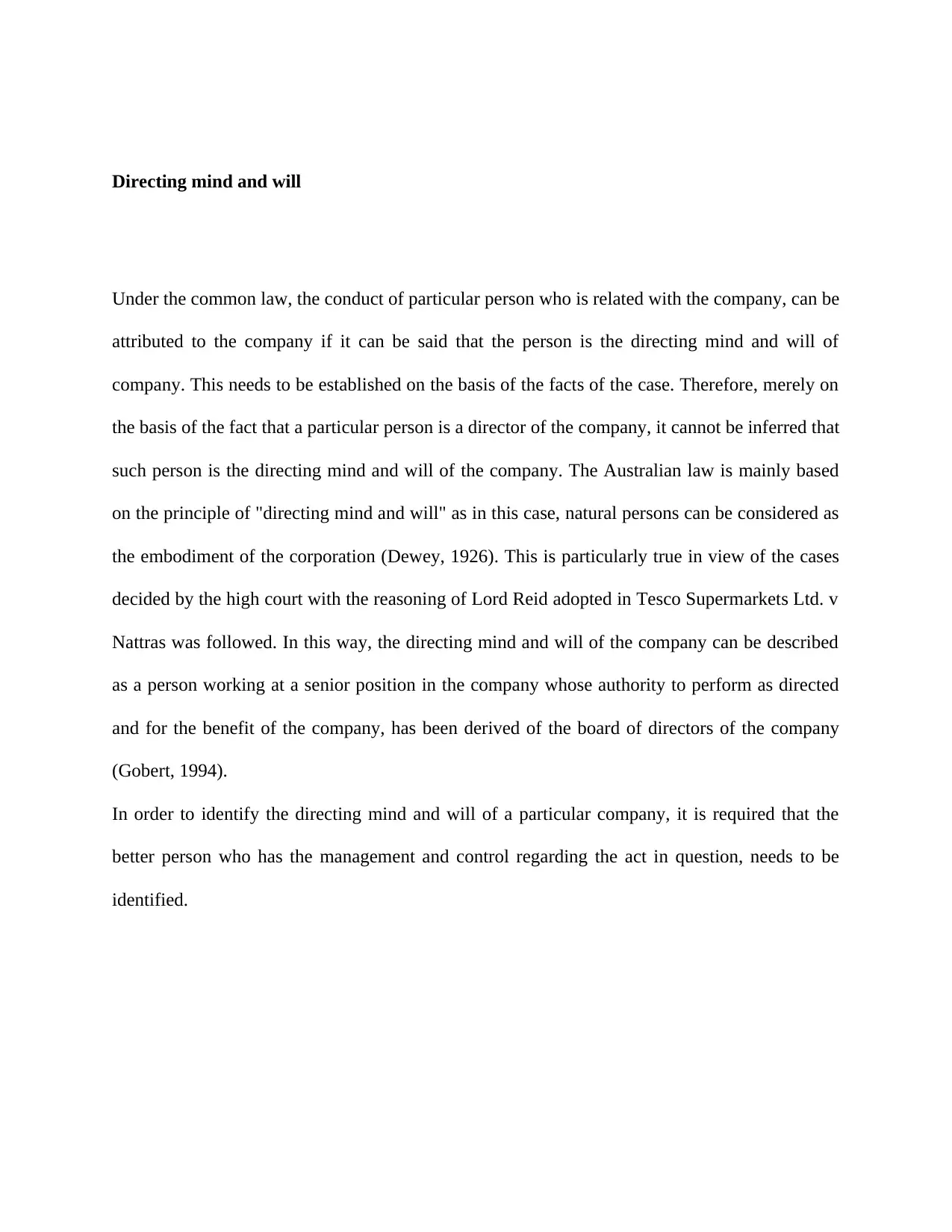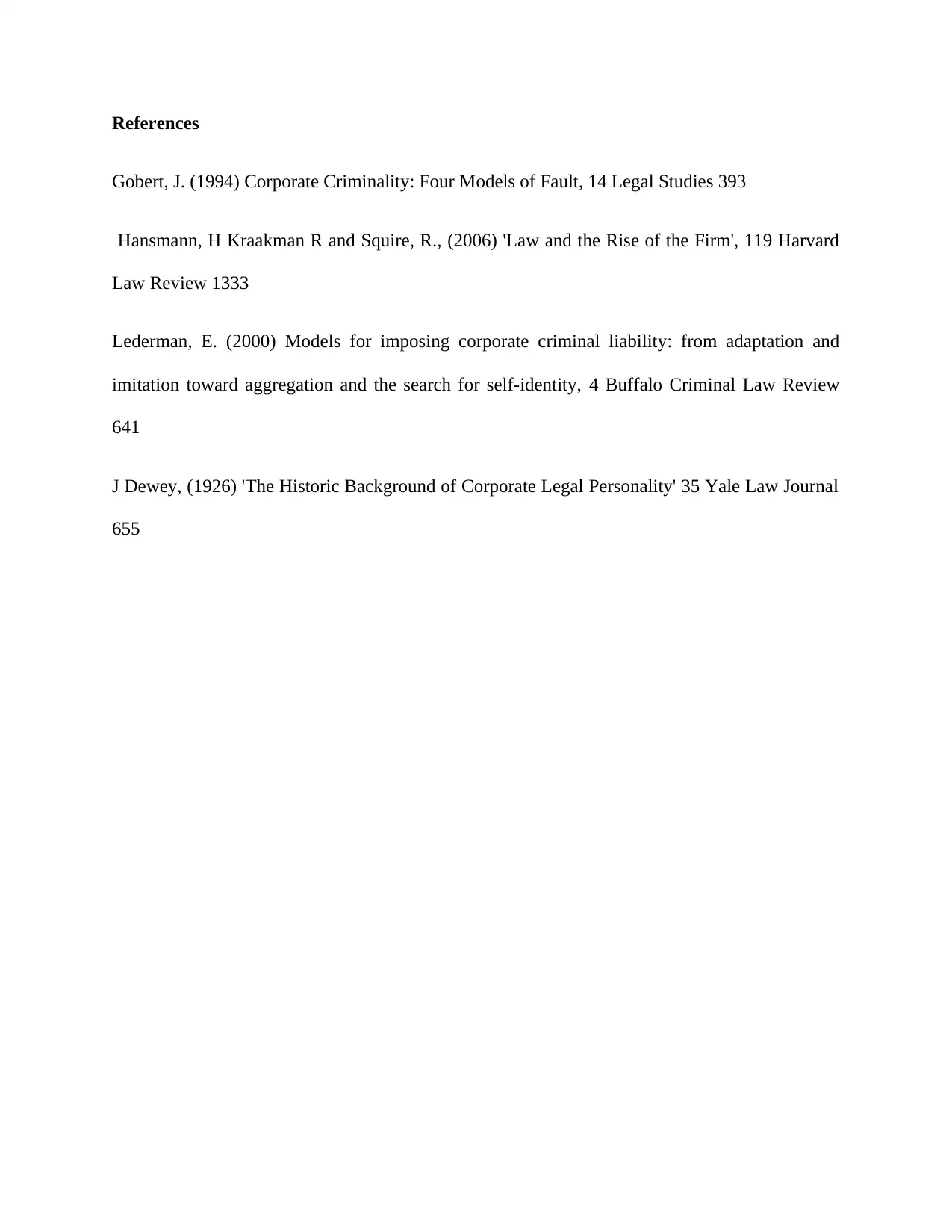Corporate Law: Directing Mind and Piercing the Corporate Veil Analysis
VerifiedAdded on 2020/04/01
|3
|648
|112
Report
AI Summary
This report provides an analysis of two crucial concepts in corporate law: 'directing mind' and 'piercing the corporate veil.' The 'directing mind' refers to the individuals within a company whose actions and decisions are considered the company's own, primarily based on the principle of the company's directing mind and will. The report highlights the importance of identifying the person in the senior position of the company. 'Piercing the corporate veil' is the legal process of disregarding the separation between a corporation and its shareholders, making the shareholders or directors personally liable for the company's debts or actions. The report also notes that courts are generally reluctant to pierce the corporate veil and do so only in cases of serious misconduct. References to supporting legal literature are provided.
1 out of 3










![[object Object]](/_next/static/media/star-bottom.7253800d.svg)